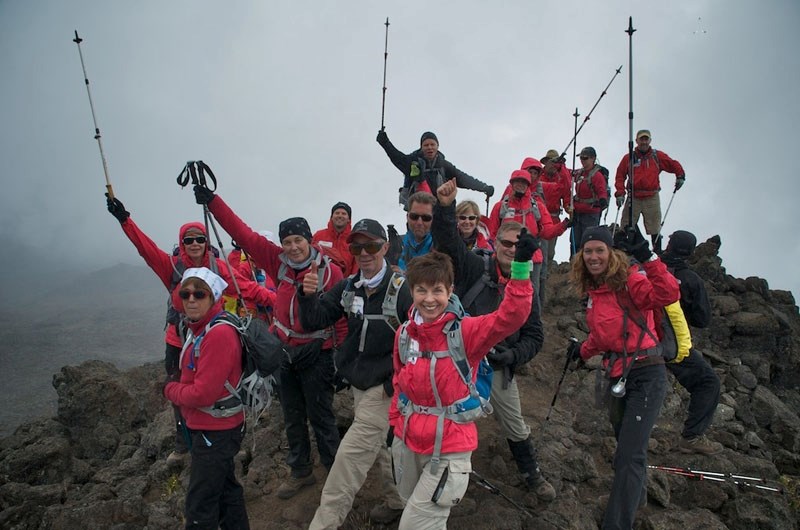A group of local climbers have reached a new peak, as have their efforts to raise money for the Royal Alexandra Hospital Foundation.
The group of more than 30 climbers from Alberta — including four soldiers from Canadian Forces Base Edmonton — reached the summit of Mt. Kilimanjaro in the African country of Tanzania on Wednesday, raising more than $800,000 for the foundation in the process.
Michael Chevalier, communications officer for the Royal Alexandra Hospital Foundation, said that, when news came that the climbers had reached the top of the mountain, everyone involved was very excited.
“This is a unique fundraiser for the foundation. We do our lotteries, we do our gala dinners, we do our direct mailouts. So for us to send 37 people halfway around the world to climb a mountain was new and exciting,” he said.
“When it got to be the final day, a 12-hour day for the team from their base camp at Kibo, heading up to Gilman’s Point, heading up to the summit and coming back down, we were on the edge of our seats,” he added.
The highest point of the mountain is Uhuru Peak, which is 5,895 kilometres above sea level.
Early on the climb, two members of the group had to turn back due to gastrointestinal problems, and Chevalier said several others were afflicted with altitude sickness.
“It’s sort of a given that, as you get to the higher elevations and the oxygen content gets lower, everybody’s going to feel it one way or another. How serious it gets is unpredictable; it depends on the individual,” he said. “Somebody may be very fit down at sea level, but up there, it can cause them a lot of pain and discomfort, which slips over to disorientation.”
But the soldiers from CFB Edmonton did just fine, even if one of them, Cpl. Mark Fuchko, needed a little coaxing to make it the last 300 metres from Gilman’s Point to Uhuru Peak.
“When they got to [Gilman’s Point], apparently Fuchko said, ‘OK, I’m done,’ and the other three guys said, ‘No, you’re not. You’re coming to the top with us, even if we have to carry you,’” Chevalier said. “And Fuchko said, ‘You’re not carrying me. Here I go.’”
Fuchko, who serves with the 1st Battalion Princess Patricia’s Canadian Light Infantry, lost both his legs below the knee in March 2008 when he was struck by an improvised explosive device in Kandahar province.
“I’m extremely stubborn. I want to make it to the top of this mountain. I don’t care if I have to climb on all fours or two broken artificial limbs — I will make it to the top,” he said prior to the start of the expedition when the group gathered at the garrison for some military-style training.
The goal of the Kilimanjaro climb was to raise $575,000 for a computerized surgical navigation system, which will help make hip and knee replacement surgeries less invasive and faster to heal.
However, that bar was cleared quite handily, with a total of $814,588 raised.
“This has been a very unique project for us, in terms of the event itself, obviously,” Chevalier said. “We’ve been so impressed by the community support and the media support — I don’t think we’ve ever had a campaign that’s had so much attention, because of the adventure, because of the uniqueness. We’re thrilled that we’ve gone way over our goal and raised more money than we anticipated.”
While some of the expedition members are staying in Africa for a six-day safari now that they’re down from the top of Mt. Kilimanjaro, others are expected to make their way back home to Canada over the next few days.
And Chevalier said the foundation hasn’t decided yet whether it will try to twist their arms — and the arms of others — into doing it all over again.
“At the moment, we don’t know,” he said. “We’re sort of letting the dust settle on this one — let everybody get back home, and we’ll discuss the pros and cons and see whether or not we want to tackle this again next year.”




